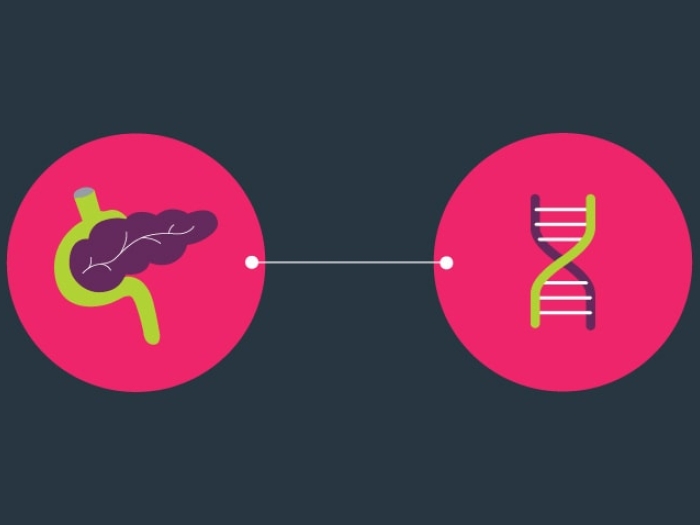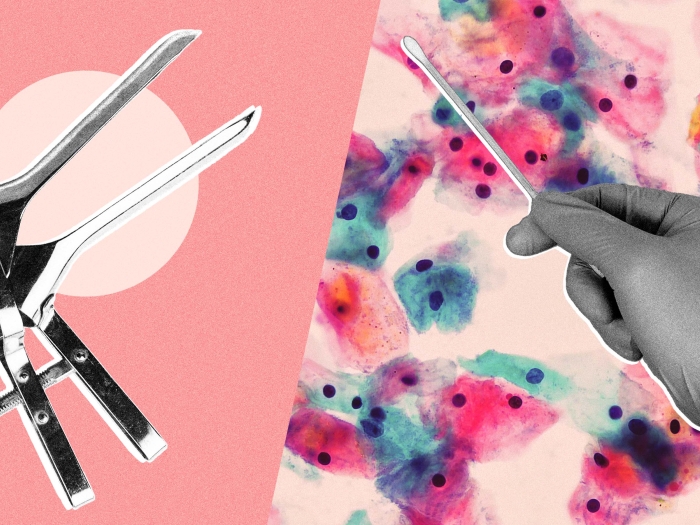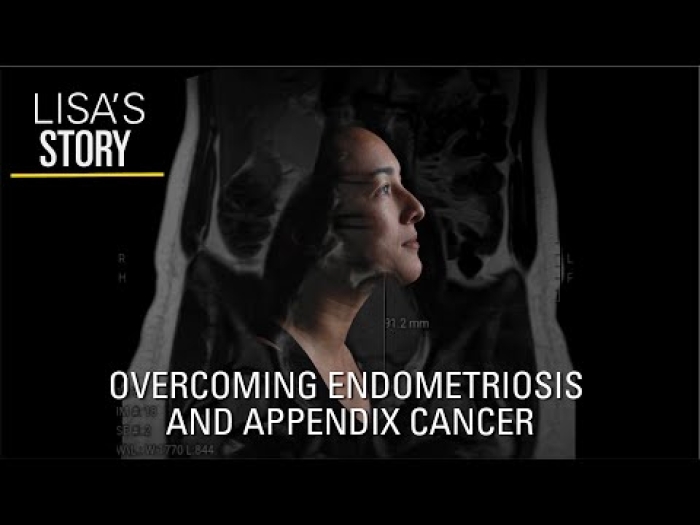After Cathleen Argyle and her mother, Diane, developed breast cancer, the pair decided to get genetically tested. What they discovered would shape the health decisions of multiple family members
5:00 AM
Author |

On March 3, 2018, Cathleen Argyle called the University of Michigan Health Rogel Cancer Center to get her results.
The 51-year-old wasn’t waiting to see whether she had cancer. In fact, she’d already been diagnosed with early-stage breast cancer a month or so earlier and undergone a lumpectomy to remove the tumor. Instead, Cathleen was about to find out whether she carried a genetic mutation that increased her risk of certain cancers.
Cathleen’s mother, Diane, had previously developed cancer. So had several of Diane’s relatives. So, when Cathleen, too, joined that group, Diane decided it was time to undergo genetic testing.
Cathleen’s results came back first: Positive. Cathleen had a rare mutation in the ATM gene complex, which repairs damaged DNA, that increased her risk for several cancers, including breast.
“I was a bit shocked, quite frankly,” Cathleen said.
The shocks kept coming: Diane, the family learned, wasn’t the carrier of the mutation.
“So, if it wasn’t Diane, then who was it?” Cathleen said. “Well, it’s gotta be Ray.”
A few weeks later, after subsequent testing, Cathleen’s father called to confirm her hypothesis.
“Sorry to tell you, this, kiddo,” Ray Argyle had said. “But I’m the one who gave it to you.”
The news was a lot to handle. But the information the father and daughter gained about their risk of cancer would help them in significant ways: Cathleen to make important decisions about her cancer treatment and Ray to get worrisome symptoms checked out sooner than he otherwise might have.
“I’m really grateful,” Ray said. “It’s good to be alive.”
Diane and Cathleen
The conversations with Rogel’s Breast and Ovarian Cancer Risk Evaluation Clinic started before that poignant phone call.
In advance of the testing, Diane and Cathleen spoke with genetic counselor Kara Milliron, M.S., C.G.C., who reviewed their medical and family histories.
Cathleen was the fifth or sixth person in her extended family to be diagnosed with cancer — enough of a repeating pattern that it seemed there could be a shared clue hidden among the family’s genes.
But Milliron cautioned that 90% to 95% of cancer cases are “unfortunate random chance events.” As a result, the majority of genetic tests the clinic conducts come back negative for known mutations that increase cancer risk.
Even when tests come back positive, that doesn’t mean the person with the mutation is guaranteed to develop cancer, she noted.
“No one has a perfect genome,” Milliron said. “We all have about five or six mutations that we’re blissfully unaware of unless we have a child with someone who just happens to have a mutation in that same gene or something like this happens where you get a cancer diagnosis at a young age.”
Before the consult wrapped up, Sofia Merajver, M.D., Ph.D., the medical director of the clinic, joined Milliron to answer the Argyles’ questions.
“I look forward to these conversations because education is such a huge part of what we do in genetics,” Merajver said. “We are here to educate patients about the advantages of living in a society that respects science and the great possibilities that we are opening up for their loved ones.”
Cathleen

Cathleen Argyle and her family are huge U-M fans.
A few weeks later, Cathleen was left to deal with the answer to the primary question she’d been asking: Did she have a genetic mutation?
The ATM mutation is much less talked about than those on the BRCA1 and BRCA2 genes. That’s partially because it’s rare: Less than 0.5% of people carry an ATM mutation.
And for those who have it, like Cathleen and Ray, the increased risk of cancer is not as high as might be assumed. The ATM mutation means Cathleen has a 30% lifetime risk of developing breast cancer, compared to 12.5% for the general population.
But Cathleen did get breast cancer, and she was at a higher risk of developing additional cancers in the future, including colorectal and pancreatic cancers.
During Cathleen’s post-testing visits, Milliron and Merajver talked about tailored cancer screening. More frequent colonoscopies could help catch early signs of colorectal cancer, for instance. U-M Health had also been an early adopter of a novel method to screen for pancreatic cancer in certain patients with high genetic risk.
And before then, Cathleen could undergo additional treatment to increase the likelihood that her breast cancer wouldn’t return.
We are here to educate patients about the advantages of living in a society that respects science and the great possibilities that we are opening up for their loved ones.”
Ultimately, her choices came down to radiation or surgery. Her ATM mutation meant that, if she chose radiation, there was an increased chance of developing a second breast cancer in the future.
Surgery, though, carried its own risks and would involve removing one or both breasts.
“It was disheartening,” Cathleen recalled. “I kept thinking, ‘What do I do?’ The easy way out would have been to have the radiation and be done with it. But since this ATM gene was thrown into the mix, it made for a challenging time. I don’t know that I’ve ever thought so much about a decision.”
“Some women choose to have mastectomies because they don’t want to ever go through cancer treatment again,” said Megan Williams-Morad, PA-C, a physician assistant with the breast oncology clinic at the Rogel Cancer Center who was part of Cathleen’s treatment team. “But some people say that unless a mastectomy is going to save their life, they don’t want to have it. It’s about what the meaningful benefit is to you as the patient.
SEE ALSO: How Cancer Genetic Testing Can Save Lives
“What I really like about Cathleen is she asks those important questions and makes decisions with all that information in mind,” Williams-Morad added.
Eventually, Cathleen decided to have both breasts removed, which would reduce her risk of developing breast cancer again by 90% to 95%. She also chose a breast reconstruction procedure called a DIEP flap that would transfer the fat from her belly up to her chest and use it to reshape her breasts.
“Many times we’re able to reconstruct these organs that were taken away for cancer reasons to a point where they look very realistic,” said Adeyiza O. Momoh, M.D., Cathleen’s plastic surgeon. “Based on the feedback we get from patients, they’re often very pleased with what we can accomplish.”
Cathleen concurs.
“That guy’s amazing,” she said of Momoh. “I wouldn’t have thought he could do all that plumbing, and oh my God, he did. And everything healed just fine.”
Cathleen took eight weeks off from work to recover from the operation. By summer 2021, she was doing well enough to bike 90 miles with her son, Adam.
“If people ask what’s the hardest thing you’ve done in your life, those choices were it for me,” Cathleen said. “It wasn’t to get married, have kids, buy a house. The hardest thing was to make a decision about my own well-being, what I thought would be the outcome of the future. But five years later, here I am.”
Ray

Ray Argyle likes to tinker with a 1929 Ford pickup truck he shares with his grandson.
And then there was Ray.
He didn’t have a history of cancer and wasn’t prone to significant illness. He ran 15 to 20 miles a week for decades, and he and Diane have scuba dived all over the world.
“I have a neighbor who’s said to me, ‘Damn you, you’ll get a cold and you’re over it the next day. I get a cold, and I’m in bed for a week,’” Ray said, laughing.
But in 2020, Ray’s glucose levels shot up. Although he first attributed the uptick to too many jelly beans, it was clear when he lost 20 pounds in the span of two months that excess sugar wasn’t the problem.
Thinking about his increased likelihood of cancer, Ray continued to push for more answers — and wasn’t surprised when a CT scan showed he had pancreatic cancer.
Because he hadn’t had very many health issues in the past, Ray believes he wouldn’t have investigated his concerning symptoms as quickly if he hadn’t known he had the ATM gene.
“Had I waited another two months and done nothing, it might have been too late,” he said.
It’s difficult to know whether that would have been the case. But pancreatic cancer’s dismal survival rate — 11% five years after diagnosis — and the fact that it’s frequently diagnosed at late stages, once the cancer has spread to distant areas of the body, makes early action crucial.
Ray’s tumor was locally advanced, meaning that blood vessels outside the pancreas were involved, but it hadn’t metastasized.
“If someone has a locally advanced, surgically inoperable pancreatic cancer like Ray, I send them for radiation and chemotherapy to seal the cancer in the hope that it doesn’t grow further,” said Thomas Enzler, M.D., Ph.D., Ray’s medical oncologist at Rogel.
So far, Ray’s response has been impressive. While his periodic scans still detect cancer, his tumor has shrunk and continues to do so now that his 25 cycles of chemotherapy and radiation are complete, an outcome that Enzler calls “amazing.”
Although Ray has lingering numbness and tingling in his feet (a side effect of the chemotherapy), he’s still able to play golf, zoom around Ann Arbor on his e-bike and restore a 1929 Ford pickup truck he shares with Adam.
“We’re so fortunate to live here and have access to such top-notch medical care,” Ray said. “I love Michigan Medicine. Everyone there, from the guy that’s parking the cars to the person at the reception desk to the nurses administering the drugs to the doctors — they’re just the nicest people. You guys have done wonders for me.”
“And my mother and me,” Cathleen added. “You saved all three of us.”
Diane

Diane Argyle died in 2019 of causes unrelated to her breast cancer diagnosis 15 years earlier, but her legacy lives on.
Diane Argyle always wanted to know more.
Once she became the director of the Ann Arbor Parks and Recreation ice skating program, she continued to take skating lessons herself for decades, “working at her skating like someone would work on a master’s degree,” former ice skating director Betty Jane Wilson told the Ann Arbor Observer.
And after Diane was treated for breast cancer in 2004, she took so many science classes at the University of Michigan that Max Wicha, M.D., her oncologist and Rogel’s founding director emeritus, would later write, “In my entire 40-year career of treating cancer patients, I can honestly say that she was unique in her passion for knowledge. She attended more lectures on cancer research than any of my students.”
“She always asked thoughtful questions,” Milliron remembered. “And she was very well read. She went to the primary literature and understood it. There were a couple of times where I’ve said, ‘Wow, I don’t remember that from that paper; I’m going to have to go back and look at it again.’ She was a brilliant, brilliant woman.”
Diane died in 2019. But she lived for 15 years after her breast cancer diagnosis and ultimately passed away from unrelated causes.
And her commitment to learning about her family’s genes left them with knowledge that may have changed the course of their lives — the best legacy she could have asked for.
“As my mother thrived, I am continuing to thrive,” Cathleen said, “and my father is beginning to thrive again.”

Explore a variety of healthcare news & stories by visiting the Health Lab home page for more articles.

Department of Communication at Michigan Medicine

Want top health & research news weekly? Sign up for Health Lab’s newsletters today!





